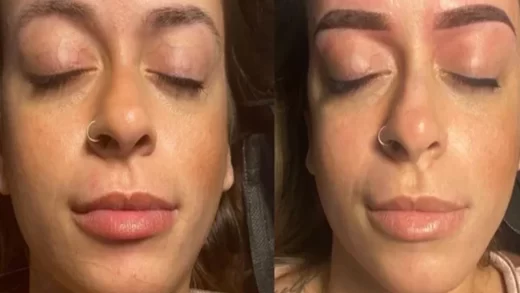Wounds are a common occurrence, whether they are caused by accidents, surgeries, or any other injury. One common concern that people have is whether all wounds leave a scar. In this article, we will explore the factors that determine whether a wound will leave a scar or not.
Understanding the Healing Process
When the skin is injured, the body initiates a complex healing process. The first stage is the inflammation stage, where blood vessels at the site of the wound constrict to stop bleeding. This is followed by the formation of a blood clot, which helps in the closure of the wound. Next, the body starts to rebuild the damaged tissue by producing collagen, a protein that provides strength and structure to the wound.
At this stage, the body goes through the remodeling process, where the newly formed tissue gains strength and flexibility. During this phase, the appearance of the scar may change as it matures.
Factors that Influence Scar Formation
While the healing process is relatively consistent, not all wounds will leave a visible scar. There are several factors that influence the formation of scars:
Depth and Size of the Wound
Deep and large wounds are more likely to leave a scar compared to superficial or small wounds. This is because deeper wounds involve more damage to the skin and underlying tissues, requiring more extensive healing.
Location
The location of the wound also plays a significant role in scar formation. Areas with less blood supply, such as the joints or certain body parts, may experience slower healing and a higher chance of scarring.
Individual Factors
Each individual has a unique healing response, which can be influenced by factors such as age, genetics, and overall health. Younger individuals tend to heal faster and have a reduced risk of scarring compared to older individuals.
Proper Wound Care
Proper wound care is crucial in minimizing scar formation. Keeping the wound clean and protected from infection, using appropriate dressings, and following medical advice can significantly improve the healing process and reduce the chances of scarring.
Types of Scars
Not all scars are the same. There are various types of scars that can form depending on the wound and individual factors:
Hypertrophic Scars
Hypertrophic scars are raised, red-colored scars that remain within the boundaries of the original wound. They are caused by an overproduction of collagen during the healing process and usually improve over time.
Keloid Scars
Keloid scars are similar to hypertrophic scars but extend beyond the original wound area. They can be thick, itchy, and may continue to grow even after the wound has healed. Keloid scars are more common in individuals with a genetic predisposition.
Atrophic Scars
Atrophic scars are characterized by a depressed or sunken appearance. These scars often occur as a result of the loss of underlying fat tissue or collagen during the healing process. Acne scars are a common example of atrophic scars.
Contracture Scars
Contracture scars occur when the skin tightens and restricts movement due to the healing of a large or deep wound. These scars can affect mobility and may require medical intervention.
Treating and Minimizing Scars
If scarring is a concern, various treatments can help minimize their appearance:
Silicone-based Products
Silicone-based gels or sheets can be applied to the scar to help soften and flatten it over time.
Steroid Injections
Steroid injections can be used to reduce the redness and thickness of hypertrophic or keloid scars.
Laser Therapy
Laser therapy can be effective in improving the appearance of scars by targeting the scar tissue and stimulating collagen production.
Surgical Intervention
In some cases, surgical procedures such as scar revision or grafting may be necessary to improve the appearance of a scar.
While not all wounds leave a scar, the likelihood of scar formation depends on several factors such as the depth and size of the wound, location, individual factors, and proper wound care. Understanding the different types of scars and available treatments can help individuals make informed decisions about scar management and minimize their appearance.



